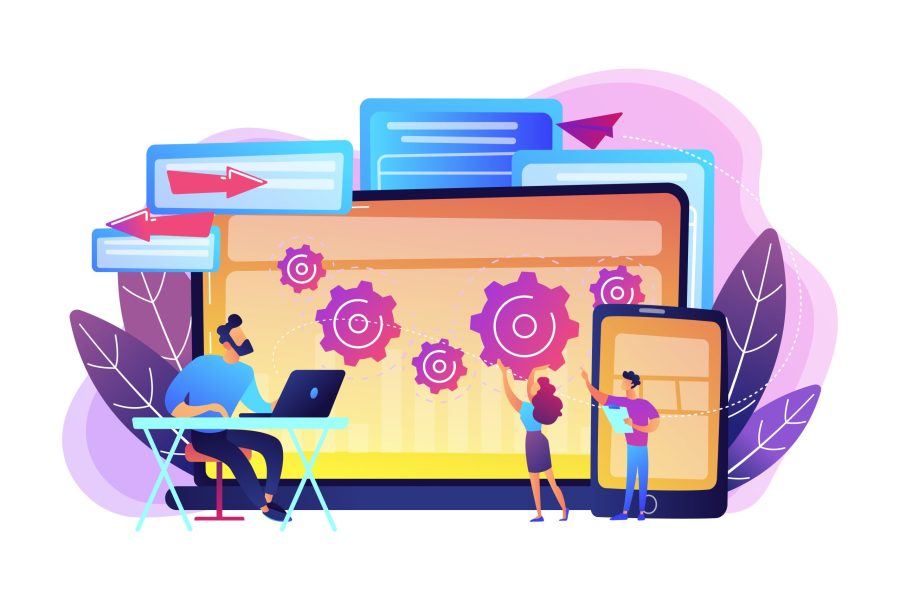Continuous delivery (CD) is an essential software development practice involving frequent, automated deployment of software changes to production environments. It is a methodology that extensively uses test automation, seeking to make the release of new features and bug fixes a routine activity and reducing the risk and time involved in software delivery. The goal of CD is to enable a constant flow of changes into production via an automated software production line.
Essentially, the CD is about automation and monitoring. It’s about removing manual bottlenecks in the software delivery process and making sure that if something goes wrong, the team knows about it immediately. The aim is to make software releases boring and non-eventful, allowing software teams to focus on what really matters: delivering value to the customer.
Why Is It Important to Stay Updated With CD Trends?
In the rapidly changing world of software development, staying up-to-date with the latest advancements in Continuous Delivery is critical. Here are a few reasons why you should learn about and adopt the latest Continuous Delivery technology and practices.
Make Software Release Cycles Even Faster
The core purpose of Continuous Delivery is to speed up software release cycles, making them more efficient and reliable. As new tools and practices emerge, these cycles can be completed even quicker, delivering features and bug fixes to customers more rapidly. Staying updated with the latest trends ensures your organization can leverage new techniques and technologies to keep this cycle as streamlined as possible.
Achieve Competitive Advantage
A slow release cycle can be a critical disadvantage in today’s fast-paced software development environment. Companies that are agile and can quickly respond to customer needs are often the ones that succeed. Adopting the latest Continuous Delivery practices and technologies can give you a substantial edge over competitors who are slower to adapt.
Adapt to Technological Shifts
Technological advancements can introduce both new opportunities and challenges. Being informed about trends in Continuous Delivery can prepare you for changes in associated technologies, such as containerization, serverless computing, or advancements in AI and machine learning. This helps your organization adapt more smoothly to the changing technological landscape, mitigating risks and leveraging new opportunities.
Continuous Delivery Trends to Watch For in 2024
The world of software development is perpetually evolving, and Continuous Delivery is no exception. In the next few years, we’re likely to see several significant trends emerge that will reshape the landscape of Continuous Delivery. Let’s delve into these trends.
1. AI-Driven CD Pipelines
As Artificial Intelligence (AI) continues to permeate various sectors, it is also set to overhaul the CD pipeline. AI-driven CD pipelines can predict potential issues, identify bottlenecks, and suggest solutions even before developers become aware of them. This proactivity will drastically reduce the time spent on troubleshooting and debugging, accelerating the deployment process.
Furthermore, AI can automate many routine tasks in the CD pipeline, such as code reviews, testing, and environment setup. This will free developers to focus on more complex tasks, fostering innovation and efficiency. AI is poised to play a pivotal role in the evolution of Continuous Delivery in 2024.
2. Shift to “Everything as Code”
Another key trend to observe is the shift towards “Everything as Code.” This concept pertains to managing all aspects of the software delivery process, including infrastructure, configuration, security, and even data, in a codified manner. This transition is expected to streamline the software development process and foster better collaboration among development, operations, and security teams.
By treating everything as code, teams can leverage version control systems to manage changes, audit trails, and rollback capabilities. This approach will also facilitate automation and ensure consistency across different environments.
3. Comprehensive Security Integration
Security can no longer be an afterthought in the software delivery process. With the increasing prevalence of cyber threats, there is a growing emphasis on integrating security measures within the CD pipeline. This practice, often called DevSecOps, ensures that security is considered at every software development and deployment stage.
In the coming years, we can expect to see more sophisticated and comprehensive security integration in CD pipelines. This will entail automated security checks, vulnerability scanning, and threat modeling as part of the deployment process. Such measures will bolster applications’ security and foster a culture of security within development teams.
4. Enhanced Monitoring and Observability
Monitoring and observability are essential facets of Continuous Delivery. They provide insights into the performance of applications and the health of the CD pipeline. As we move towards 2024, we can anticipate significant enhancements in this area.
Advanced monitoring tools will offer real-time visibility into the CD pipeline, enabling teams to identify and rectify issues promptly. Moreover, these tools will provide granular insights into application performance, user behavior, and system health. On the other hand, improved observability will facilitate a better understanding of the system’s internal state based on its external outputs.
5. Sustainability and Green CI/CD Practices
Growing environmental concerns have led to a shift towards sustainability in various sectors and software development is no exception. Green CI/CD practices, which aim to reduce the environmental impact of software delivery processes, are likely to gain traction in the coming years.
These practices may include energy-efficient coding, carbon-neutral hosting, and using renewable energy in data centers. By adopting such practices, organizations can reduce their carbon footprint and enhance their reputation as responsible corporate citizens.
6. Seamless Multi-Cloud Deployment
In 2024, we can expect to see more robust and versatile CD tools that facilitate seamless deployment across various cloud providers. These tools will offer features such as multi-cloud compatibility, automated environment provisioning, and configuration management. This will enable organizations to leverage the best features of different cloud providers and ensure optimal performance of their applications.
7. CD in Edge Computing
Edge computing, which entails processing data near its source, is another area where we can anticipate significant advancements in Continuous Delivery. As more devices connect to the internet, the need for rapid, localized data processing and analysis is becoming more important.
CD in edge computing will involve deploying updates and new features to edge devices swiftly and efficiently. This will entail unique challenges such as managing many devices, ensuring security, and handling intermittent connectivity. However, with the advent of sophisticated CD tools and practices, we will likely see effective solutions to these challenges in 2024.
Conclusion
In conclusion, the landscape of Continuous Delivery in 2024 will be markedly different from what it is today. With advancements in AI, the shift to “Everything as Code,” comprehensive security integration, enhanced monitoring and observability, green CI/CD practices, multi-cloud deployment, and CD in edge computing, the future of CD promises to be exciting and transformative. As we navigate these changes, it’s imperative to stay abreast of the latest trends and continually adapt our practices to stay ahead of the curve.
Featured Image Credit: Provided by the Author; freepik; Thank you!

















